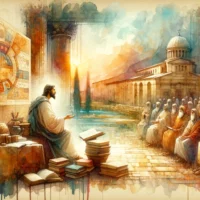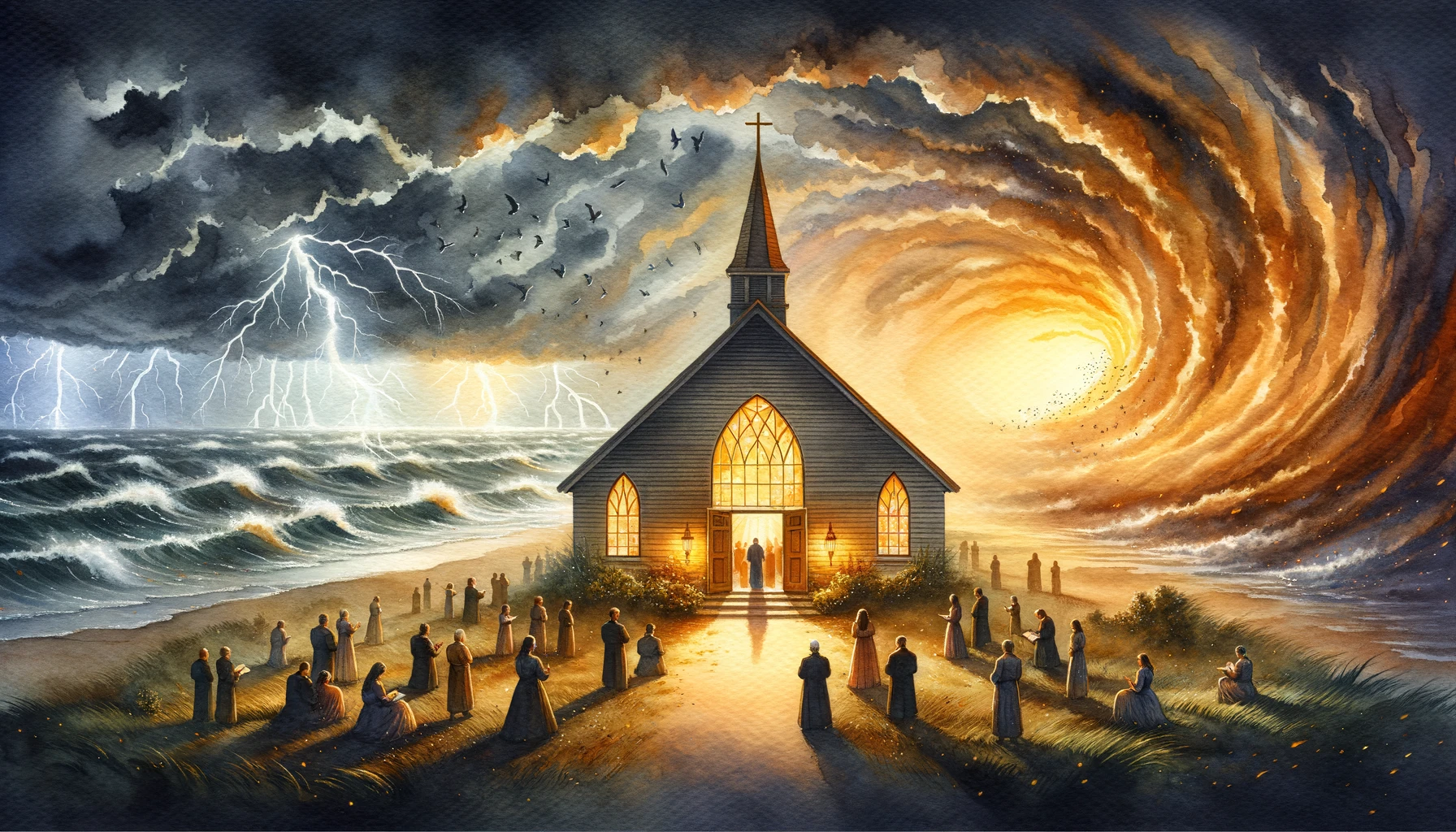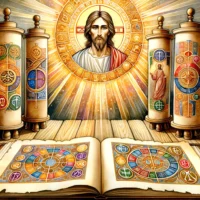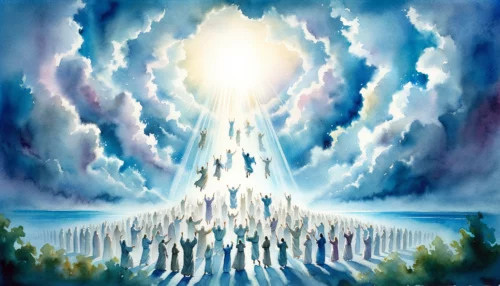Across centuries, many have tried to decipher the signs of the end times – a period of tribulation and revelation as foretold in Biblical prophecies. While these signs are often viewed through the lens of fear, they are essentially meant to heighten our spiritual readiness, reminding us to keep our lives aligned with the teachings of Christ. As we explore these prophetic signs, we approach them not with dread, but with renewed faith and commitment to understanding God’s divine plan.
Table of Contents
The Role of Prophecy
Biblical prophecy plays a critical part in understanding the faith journey of Christians. Prophecy, in this context, refers to divinely inspired revelations or instructions given by God. The purpose of these prophecies is manifold – they guide us, prepare us for future events, and confirm the sovereignty and foreknowledge of God.
Taking a peek into the Old Testament, we find a major part of the Book of Daniel (Chapters 7-12) dedicated to apocalyptic prophecies. The dream of Nebuchadnezzar, interpreted by Daniel, presents a foretelling of successive kingdoms leading up to a final oppressive one (Daniel 2). This vision of the statue made of different materials symbolises the succession of world empires, culminating in God’s ultimate dominion.
In the New Testament, the Book of Revelation, penned by John, is steeped in visions and symbols representing the end times. John’s vivid descriptions of seals being broken, trumpets sounding, and bowls of wrath being poured out (Revelation 6-16) signify a series of calamities and divine judgements that precede the second coming of Christ.
Jesus himself speaks of end-time events in the gospels. The Olivet Discourse, found in Matthew 24, Mark 13, and Luke 21, is a notable teaching where Jesus responds to his disciples’ queries about the signs of his return and the end of the age. His description ranges from wars, rumours of wars, and natural disasters, to moral decay, persecution of believers, and the global proclamation of the gospel.
In 2 Timothy 3:1-5, Apostle Paul provides a vivid portrayal of society’s moral breakdown during the last days. Traits such as selfishness, greed, arrogance, and disobedience are highlighted, serving as sobering indicators of societal decline.
The rise of false prophets and deceivers is another end-times prophecy echoed throughout the Bible (Matthew 24:24, 2 Peter 2:1). These figures lead many astray with their misleading teachings, thus the need for spiritual discernment is stressed.
Another prophecy, drawn from the Book of Revelation (13:16-17), speaks of a global economic system that restricts commerce to those who bear a specific mark. While this mark is a subject of much debate, its existence aligns with the Bible’s portrayal of an increasingly unified world.
Understanding Biblical prophecy lays the groundwork for recognizing end-time signs. The Book of Daniel in the Old Testament and the Book of Revelation in the New Testament provide substantial prophetic content about the end times. Jesus’ Olivet Discourse and Paul’s writings further enrich our knowledge, detailing the signs of societal decay, natural disasters, false prophets, and a global economic system. Through prophecy, we recognize that the end times aren’t merely about fear and calamity, but about the affirmation of God’s sovereignty, preparing ourselves for Christ’s return.
Interpreting the Signs
Informed by the prophetic writings we have reviewed, there are observable global phenomena that many Christians associate with the foretold signs of the end times. Among these signs are natural disasters, moral decay, and global unrest, events that align with the Bible’s prophecy.
Natural disasters, including earthquakes, famines, and pestilences, are mentioned in the Bible as precursors to the end times (Matthew 24:7, Luke 21:11). Today, we witness an increase in such occurrences. Climate change drives extreme weather conditions, while the depletion of resources leads to food scarcity in parts of the world. Disease outbreaks, like the COVID-19 pandemic, have held the globe in its grip, raising questions about our preparedness for such crises.
A moral decay within society is another sign detailed in the Bible (2 Timothy 3:1-5). This decay manifests in a myriad of ways, including the rampant selfishness, greed, boastfulness, and disrespect evident in society. The rise in violence, broken families, and societal strife point towards a disintegration of moral values. This perceived moral decline aligns with biblical predictions, suggesting a world falling away from the virtues espoused by Christian teachings.
Global unrest, marked by wars and rumours of wars, is yet another prophetic sign (Matthew 24:6). The world has been caught up in conflicts and power struggles, with nations rising against nations. The ongoing disputes and skirmishes across the globe bring unrest and anxiety, falling in line with the Bible’s depiction of the tumultuous times preceding Christ’s return.
One more sign worth mentioning is the universal proclamation of the gospel (Matthew 24:14). Despite the mentioned adversities, the Christian message of salvation is being propagated worldwide, aided by modern technology and missionary work. This global spread of the gospel is a significant marker of the end times.
False prophets and teachers are also a prevalent end-time sign (Matthew 24:24, 2 Peter 2:1). With their deceptive teachings, these figures mislead many, creating confusion and disarray. Discerning truth from falsehood is increasingly challenging, emphasizing the need for sound biblical understanding and spiritual discernment.
Interpreting the signs of the end times involves understanding occurrences like natural disasters, moral decay, global unrest, the worldwide proclamation of the gospel, and the rise of false prophets. The Bible, in its prophetic wisdom, foretells these events, which seem to reflect our current global reality. Such alignment isn’t cause for fear but a call for steadfast faith and readiness for the return of Christ. It underscores the importance of nurturing our spiritual lives and cultivating a deep understanding of our Christian faith.
Living in the End Times
For believers navigating through potential signs of the end times, the paramount response is not fear, but faith, vigilance, and spiritual readiness.
Faith is central to our response. Belief in Christ and adherence to his teachings equip us to face any trials or tribulations (John 16:33). In a world rife with uncertainties, faith anchors us. It provides the resilience to endure and the hope for a triumphant future in Christ. By nurturing our faith, we stay connected to the source of our strength and guidance.
Vigilance complements faith. As we anticipate Christ’s return, we are called to stay alert and discerning. The presence of false prophets and deceitful teachings (Matthew 24:24, 2 Peter 2:1) makes this vigilance crucial. We need to be vigilant about understanding the true message of the Bible, thus preventing ourselves from being led astray.
Spiritual readiness is the natural outcome of faith and vigilance. By maintaining a close relationship with Christ, we ready ourselves for his return (Matthew 25:1-13). This readiness involves prayer, studying God’s word, and living out Christian values, thereby aligning our lives more closely with God’s will. The more spiritually prepared we are, the more capable we are of navigating through challenging times.
This readiness also includes sharing the good news of Christ’s salvation with others (Matthew 28:19-20). Propagation of the gospel is not only an end-times sign but also an act of readiness. It’s about preparing not just ourselves, but also those around us for the return of Christ.
In confronting the end times, it’s essential to remember that our ultimate hope is not in this world, but in the glorious eternal life promised to us through Christ’s resurrection (John 14:2-3). This hope motivates us to endure, remain faithful, and keep our spiritual lamps burning brightly, regardless of the circumstances surrounding us.
In living through potential end times, faith, vigilance, and spiritual readiness guide our response. Faith provides us with the strength to endure, while vigilance ensures we are alert to discern truth from deception. Spiritual readiness prepares us for Christ’s return and motivates us to share the gospel. These elements of faith remind us that our ultimate hope lies in Christ’s promise of eternal life. Such hope enables us to face the future, not with fear, but with an unwavering trust in God’s divine plan.
Steadfast in Faith
In the face of possible end times signs, we, as Christians, are called to stand firm in our faith, vigilant in discernment, and prepared in spirit. The signs, as foretold in the Bible and observable in our world, may seem overwhelming, yet they should not incite fear. Instead, they reaffirm the sovereignty of God, his divine plan, and the promised return of Christ. Anchored in faith, guided by biblical understanding, and inspired by the promise of eternal life, we are equipped to navigate these challenging times.
To further reflect on this, consider the following questions:
- How can your faith be strengthened during uncertain times?
- What practices can enhance your spiritual vigilance and discernment?
- How are you preparing yourself and others for Christ’s return?
Though the world may tremble and change, our faith is built on the rock-solid foundation of Christ. Let us hold on to this faith, stand firm in our beliefs, and shine our light brightly, always ready for the return of our Lord and Saviour.














